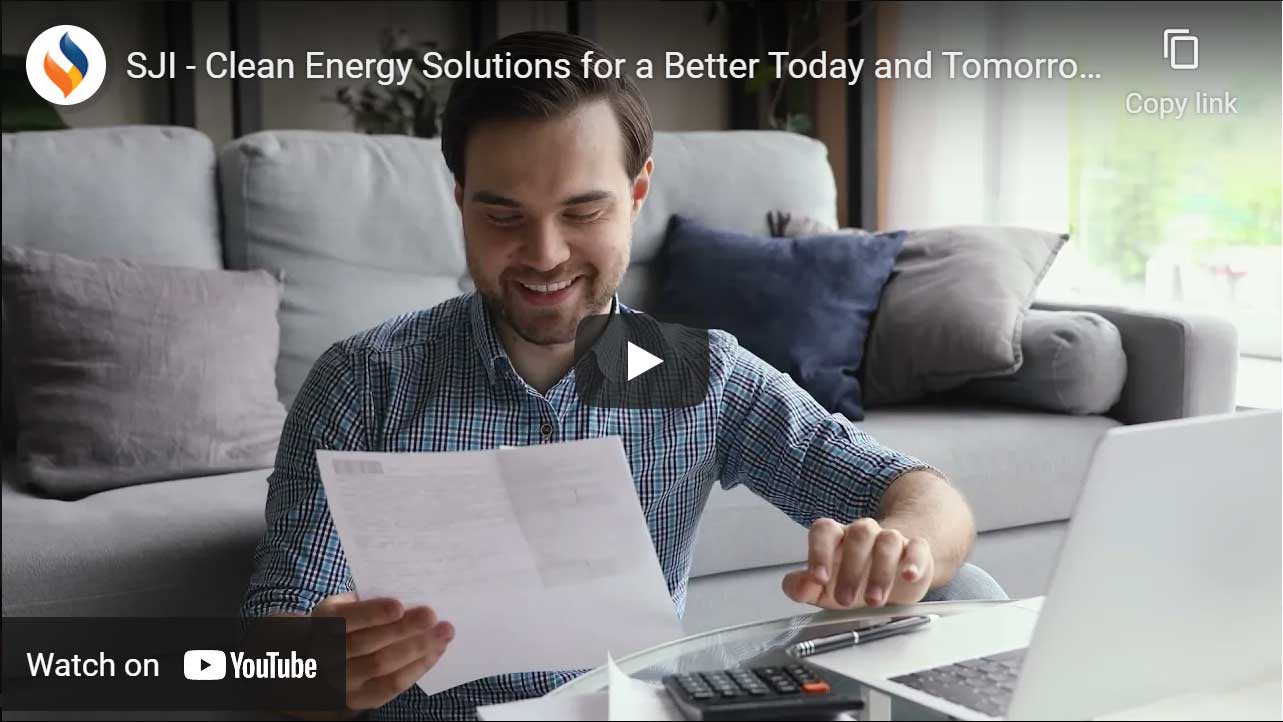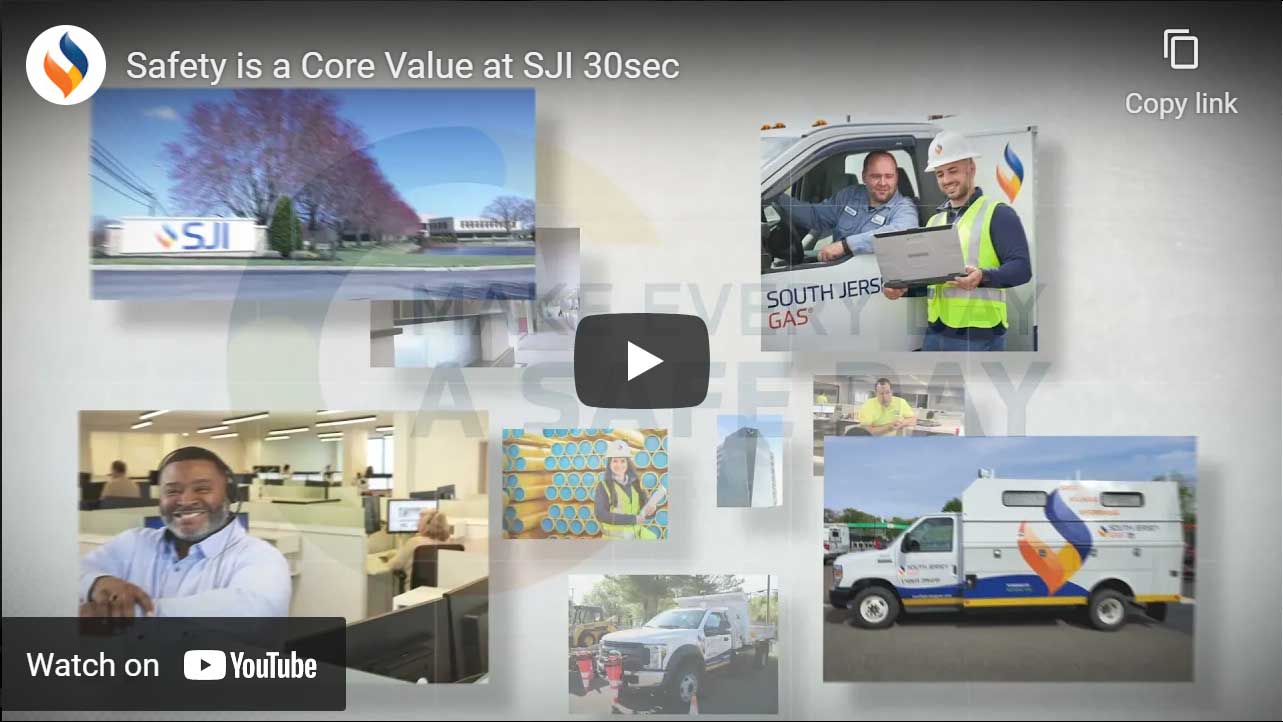
Clean Energy News
SJI is committed to being part of the clean energy future for our region.
Watch the Video

In the Community
We are a committed community partner investing in the communities where we live and work.
Watch the Video

Safety is a Core Value
Safety is core value at SJI. Every employee across the organization has a role to play in making every day a safe day.
Watch the Video